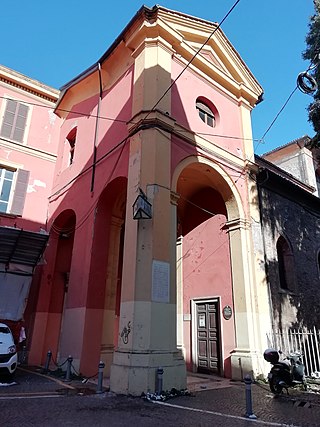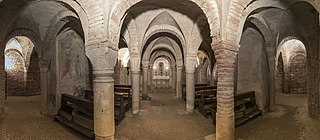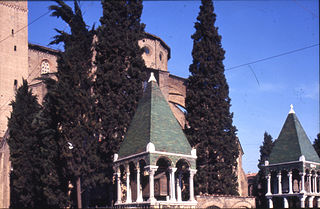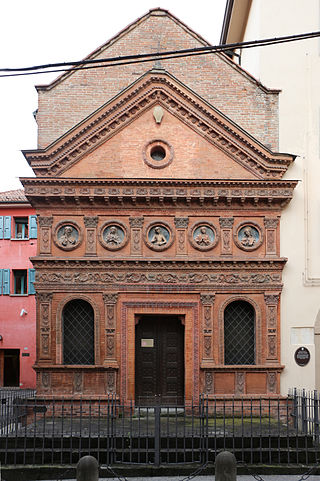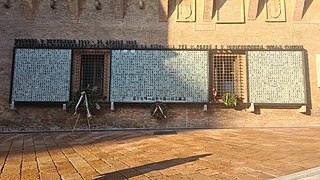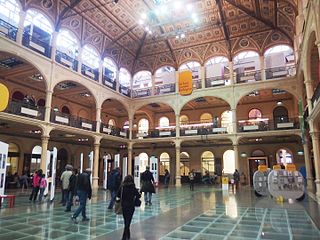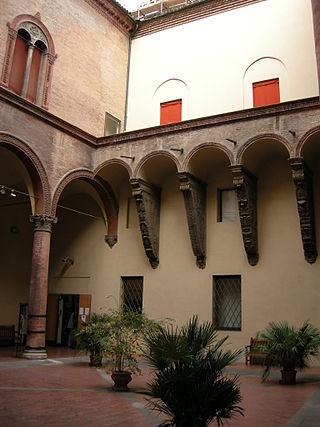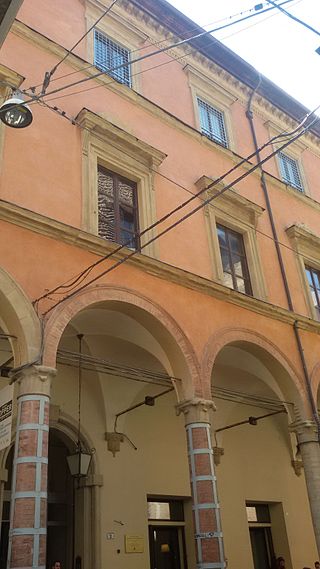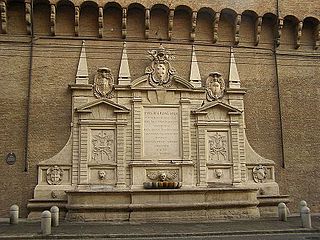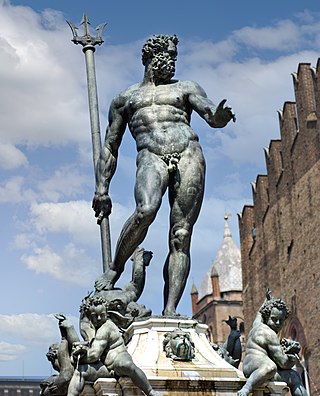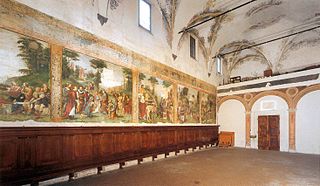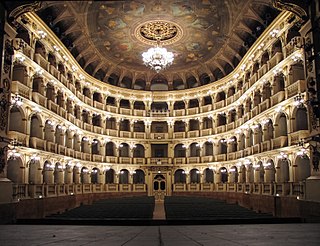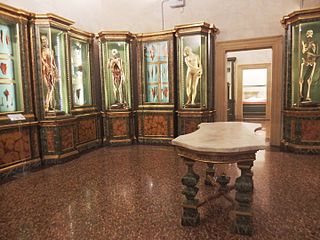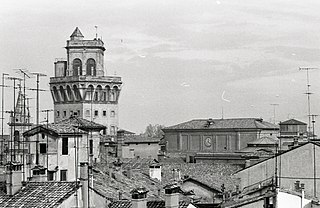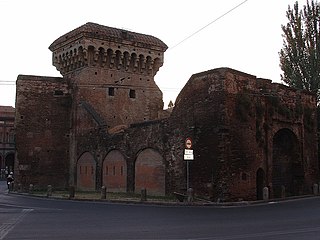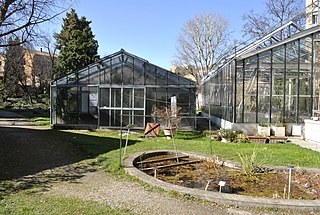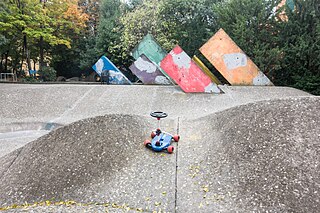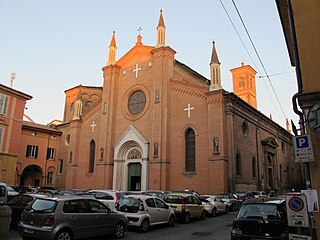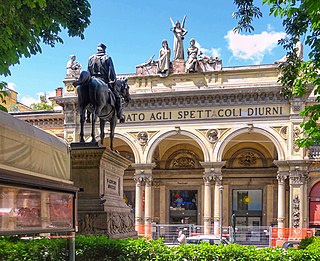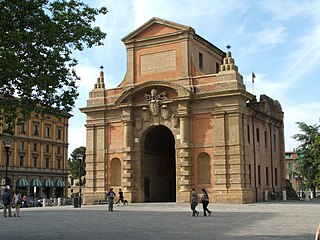Self-guided Sightseeing Tour #3 in Bologna, Italy
Legend
Guided Free Walking Tours
Book free guided walking tours in Bologna.
Guided Sightseeing Tours
Book guided sightseeing tours and activities in Bologna.
Tour Facts
9.2 km
155 m
Experience Bologna in Italy in a whole new way with our free self-guided sightseeing tour. This site not only offers you practical information and insider tips, but also a rich variety of activities and sights you shouldn't miss. Whether you love art and culture, want to explore historical sites or simply want to experience the vibrant atmosphere of a lively city - you'll find everything you need for your personal adventure here.
Activities in BolognaIndividual Sights in BolognaSight 1: Santa Maria della Carità
Santa Maria della Carità is a Renaissance-style Roman Catholic church in central Bologna, Italy.
Sight 2: Abbazia dei Santi Naborre e Felice
The abbey of the niborre saints and happy also known as Abbadia dei Santi Naborre and happy is the Catholic place of worship as well as the oldest episcopal seat of Bologna.
Sight 3: Cripta di San Zama
The crypt of San Zama is a place of worship in Bologna, located within the complex dedicated to Saints Naborre and Felice and is considered one of the oldest Christian places in the city. It stands on the remains of what, according to tradition, was the home of Vitale and Agricola, the two protomartyr saints of Bologna. The crypt is a monument of great importance both from an artistic and historical point of view, because the Christian roots of the Emilian capital lie in this place.
Sight 4: Tomba di Rolandino dei Romanzi
The tombs of the glossators of the Bolognese School preserve the remains of some of the first and most important professors of what in the Middle Ages was called the studium, i.e. the University, which in Bologna was renowned above all for the teaching of Law: they were called glossators because they commented on the texts of Roman law with explanatory additions in the margin, the "glosses", to make the contents of the passages under consideration clearer. These new professional figures, cornerstones of the city's political and cultural life, chose to be buried in places of great urban visibility.
Sight 5: Basilica di San Francesco

The Basilica of Saint Francis is a historic church in the city of Bologna in northern Italy. Founded in the 13th century, it has been the property of the Conventual Franciscan friars since then. The church has been raised to the rank of a minor basilica by the Holy See.
Sight 6: Oratorio dello Spirito Santo
The Oratory of the Holy Spirit is a Catholic building of worship located in Via Val d'Aposa, in the historic center of Bologna.
Sight 7: Basilica di San Petronio
The Basilica of San Petronio is a minor basilica and church of the Archdiocese of Bologna located in Bologna, Emilia Romagna, northern Italy. It dominates Piazza Maggiore. The basilica is dedicated to the patron saint of the city, Saint Petronius, who was the bishop of Bologna in the fifth century. Construction began in 1390 and its main facade has remained unfinished since. The building was transferred from the city to the diocese in 1929; the basilica was finally consecrated in 1954. It has been the seat of the relics of Bologna's patron saint only since 2000; until then they were preserved in the Santo Stefano church of Bologna.
Sight 8: Sacrario dei partigiani
The Memorial of the Partisans is a commemorative installation located in Bologna, Italy.
Sight 9: Biblioteca Salaborsa
Salaborsa is the main public library in Bologna, region of Emilia-Romagna, Italy.
Sight 10: San Colombano
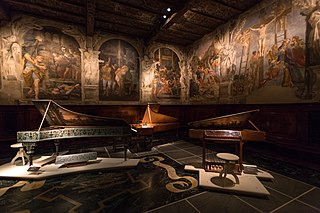
The Oratory of the Madonna of San Colombano, also called the Chiese di San Colombano e Santa Maria dell'Orazione is a religious site in central Bologna, found on Via Parigi #5, near the Bologna Cathedral.
Sight 11: Museo Civico Medievale
The Medieval Civic Museum is a museum in Bologna and is located in via Manzoni 4 in Palazzo Ghisilardi. Since July 2022, the museum has been managed by the Bologna Civic Museums Sector.
Sight 12: Palazzo Fava
Palazzo Fava or Palazzo Fava-Ghisilieri is a historic palace at 2 via Manzoni in Bologna, now housing art exhibitions and the Caffè Letterario Carracci Fava. It is most notable for its three rooms of frescoes of scenes from the lives of Jason, Medea, Europa and Aeneas by Ludovico Carracci, Agostino Carracci and Annibale Carracci, commissioned in 1584 by Filippo Fava - he was introduced to them by his tailor Antonio, Agostino and Annibale's father.
Sight 13: Cattedrale di San Pietro

Bologna Cathedral, dedicated to Saint Peter, is the cathedral of Bologna in Italy, and the seat and the metropolitan cathedral of the Archbishop of Bologna. Most of the present building dates from the 17th century, with a few parts from the late 16th century.
Sight 14: Fontana vecchia
The Old Fountain of Bologna is located against the town hall, on the side of Via Ugo Bassi.
Sight 15: Palazzo Re Enzo

Palazzo Re Enzo is a palace located on Piazza del Nettuno, 1 in the historic center of Bologna, northern Italy. The palace takes its name from Enzio of Sardinia, Frederick II's son, who was prisoner here from 1249 until his death in 1272. The palace is presently used to sponsor cultural events and exhibitions.
Sight 16: Salone della Podestà
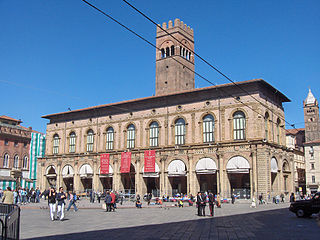
The Palazzo del Podestà is a civic building in Bologna, northern Italy.
Sight 17: Fontana del Nettuno
The Fountain of Neptune is a monumental civic fountain located in the eponymous square, Piazza del Nettuno, next to Piazza Maggiore, in Bologna, Italy The fountain is a model example of Mannerist taste of the Italian courtly elite in the mid-sixteenth century.
Sight 18: Oratorio di Santa Cecilia
The Oratory of Saints Cecilia and Valeriano is a religious site in central Bologna, found on Via Zamboni, contiguous to the portico of the church of San Giacomo Maggiore.
Sight 19: Teatro Comunale
The Teatro Comunale di Bologna is an opera house in Bologna, Italy. Typically, it presents eight operas with six performances during its November to April season.
Sight 20: Museo di Palazzo Poggi
The Palazzo Poggi Museum is a university museum in Bologna, Italy. The same building houses the headquarters of the Alma Mater Studiorum and other university museums, such as the Specola Museum and the European Student Museum (MEUS).
Sight 21: Museo della Specola
The Specola Museum is located in the astronomical tower erected at the beginning of the eighteenth century on Palazzo Poggi in via Zamboni, 33 and represents the historic headquarters of the Department of Astronomy.
Sight 22: Museo di Mineralogia Luigi Bombicci
Mineralogical Collection "Luigi Bombicci Museum" is a mineralogy and natural history museum, situated in Bologna, Italy, near Porta San Donato.
Wikipedia: Mineralogical Collection "Luigi Bombicci Museum" (EN)
Sight 23: Porta San Donato
Porta San Donato, also known as Porta Zamboni, was a gate or portal of the former outer medieval walls of the city of Bologna, Italy. It was a gate into the university area of the city.
Sight 24: Botanical Garden
The Orto Botanico dell'Università di Bologna, also known as the Orto Botanico di Bologna, is a botanical garden operated by the University of Bologna. It is located at Via Irnerio, 42, 40126 Bologna, Italy, and open daily except Mondays.
Sight 25: Giardino del Guasto
Il giardino del Guasto is a public garden in Bologna, Italy, located near Piazza Verdi. The name of the garden derives from having been built on the rubble of an important noble palace, Palazzo Bentivoglio, destroyed in 1507.
Sight 26: Chiesa di San Martino
The Basilica of San Martino Maggiore is located in the homonymous square in the historic center of Bologna. It constitutes a parish lined with the Carmelite fathers. In August 1941 Pope Pius XII elevated it to the dignity of a minor basilica.
Sight 27: Teatro Arena del Sole
The Arena del Sole is a permanent theater in Bologna, Italy.
Sight 28: Monumento ai caduti del VIII Agosto 1848
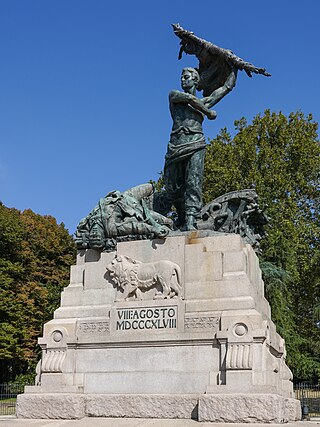
The monument to the fallen of 8 August 1848, also known as the Popolano, is a bronze statue located in Piazza VIII Agosto in Bologna, at the entrance to the Montagnola Park. A work by Pasquale Rizzoli dated 1903, it was modeled in memory of the day when the Bolognese people drove the Austrians out of the city after a firefight.
Sight 29: Parco della Montagnola
The Park of Montagnola is one of the oldest and greenest public parks in the centre of Bologna, Italy. It was first opened in the 17th century. It commemorates the victory of the Italians over the Austrians in 1848. The park has a number of 19th and early 20th century sculptures. It is used for various events.
Sight 30: Porta Galliera
Get Ticket*Porta Galliera was a gate or portal of the former outer medieval walls of the city of Bologna, Italy. It is the most ornamented of all the remaining gates.
Sight 31: Porta Mascarella
Porta Mascarella was a gate or portal of the former outer medieval walls of the city of Bologna, Italy. It stands just before the Ponte Stalingrado.
Share
How likely are you to recommend us?
Disclaimer Please be aware of your surroundings and do not enter private property. We are not liable for any damages that occur during the tours.
GPX-Download For navigation apps and GPS devices you can download the tour as a GPX file.
